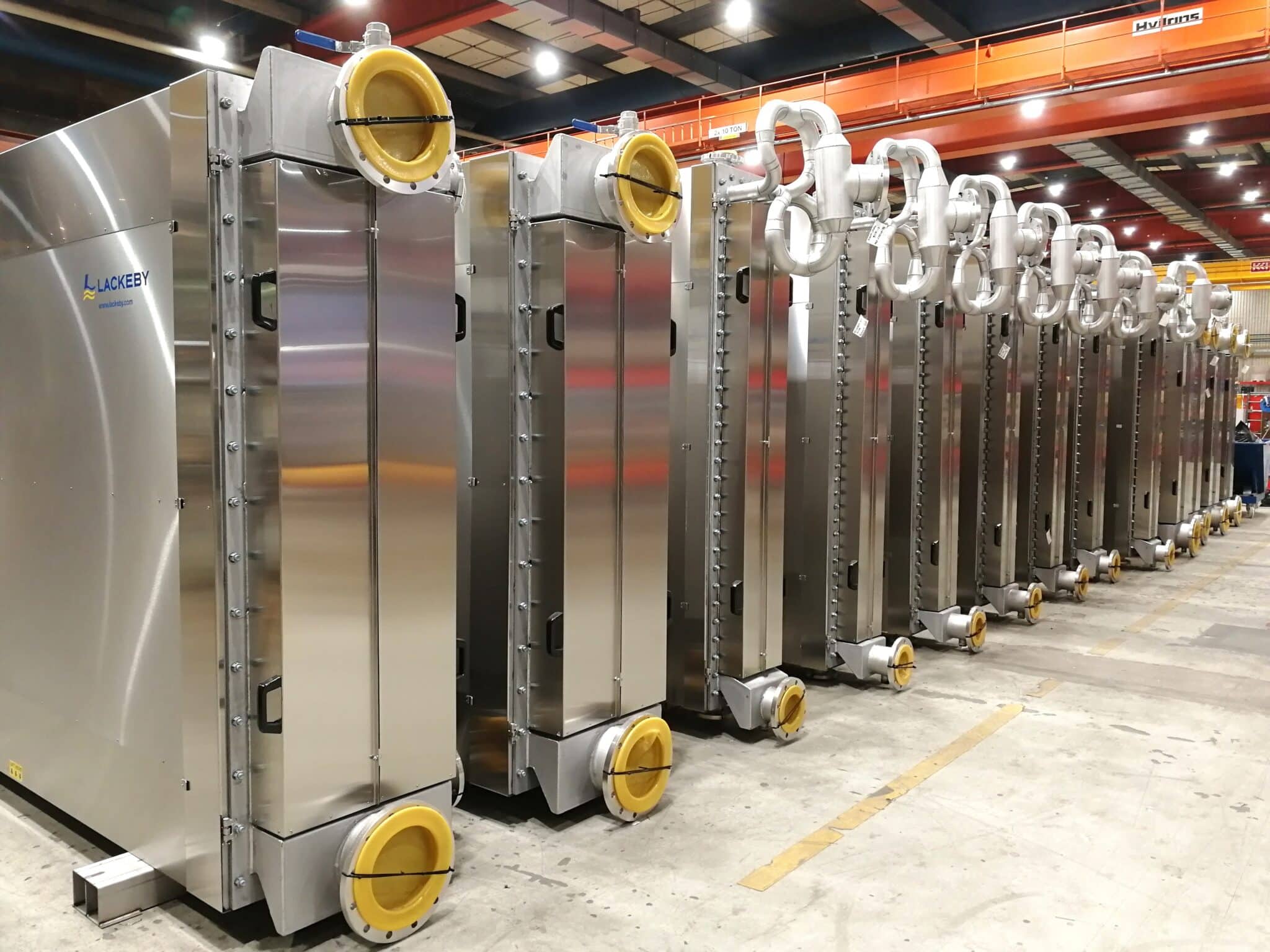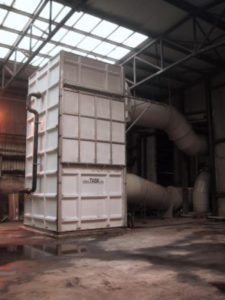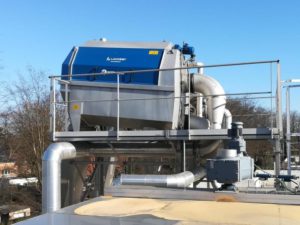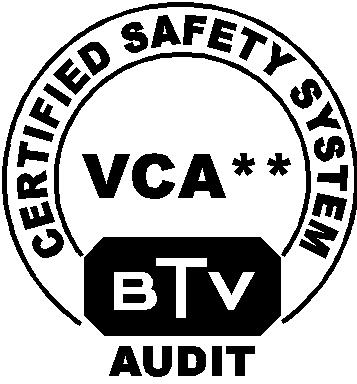In the field of air pollution control several techniques are at our disposal : gas scrubbing (physical, chemical), biofiltration, bioscrubbing, biotricklingfiltration, activated carbon filtration and post combustion (thermal – catalytic). Obviously, every method has its own application area, advantages as well as disadvantages, all at a different cost, depending on the circumstances.
Gas scrubbing
The base product for gas scrubbing is usually water, with or without additional chemicals. It’s a relatively simple process, which, in contradiction to biological processes, is well controllable. Gas scrubbing can be used for small as well as for quite big air flows and when the pollutants are well soluble in water, such as HCl, NH3, alcohols …. Oxidative scrubbers, usually treating the pollutants (among others mercaptans) by means of sodium hypochlorite or hydrogen peroxide are also frequently used. A gas scrubber can take a relatively high charge of scrubbing water and gas, still maintaining an acceptable energy level. Furthermore, the cleaning process can be executed in a relatively compact shape. Single waste gas treatment can be done in a counterflow scrubber. For airflows exceeding 80.000 -100.000 m³/h a crossflow scrubber will usually be more appropriate. Airflows requiring a multiple treatment will preferrably be sent through a multistage cross and/or counterflow scrubber, which – logically – will have a compact and cost advantageous construction. Gas scrubbers are most often made of synthetic material due to the aggressivity of the pollutants and the chemicals used. Stainless steel scrubbers will also be used, but less frequently.
Gas scrubbing processes can perfectly be followed by monitoring parameters such as pH, rH, conductivity, gasdetection, flow,…. Gas scrubbing processes can be exactly controlled. Performance is predictable and guaranteed.
It is very difficult to specify in which cases gas scrubbing can be used, but it certainly isn’t exagerated to put that in certainly 40-60 % of the cases gas scrubbing will be the best solution. Gas scrubbers will always be “custom made” and adapted to construction site situation and circumstances. Furthermore in most of the cases the polluting circumstances will not allow a commonplace and standardized solution. Most often, specialised advice regarding measurements and pilot plant testing is required. Pilot plant information is quite simple to inter- or extrapolate in order to obtain a reliable operational system. Disregarding such advice will certainly increase the risk of a mis-investment. Dedicating 10 % of the forecasted investment to preliminary investigations will always be a responsible decision in order to optimize the performance of the total investment.
Advantages of wet gas scrubbing :
- relatively simple and well controllable – also for bigger gas volumes to be treated
- low energy consumption
- compact – space saving
- predictable and guaranteed performance
Activated carbon filtration
Activated carbon filtration is a so-called adsorption technique, allowing the activated carbon to adsorb the pollutants present in the emission flow. This emission treatment method will be frequently used to eliminate solvents from waste gas. The necessary installations vary from quite simple to more complex, according to the present explosion or fire risks. Usually the activated carbon saturated with pollutants will be collected by an authorized waste collector and recycled or incinerated. In some cases the activated carbon will be recycled at site, frequently with steam. About 10-20 % of the waste gas can be treated with activated carbon filtration.
Post combustion
Post combustion is a very effective method, leaving in most cases only a remainder of carbon dioxide and water, but it is unsuitable for most anorganic pollutants. In all cases where hydrochloric acid and/or sulphur dioxide are part of the combustion products, an ulterior wet scrubbing will be necessary. The risk of explosion is basically always present at any combustion process. Post combustion can be very expensive when there is no possibility of heat reclycing and/or use of a catalyst. At an autotherm process the energy consumption will be low to very low. Post combustion will also be rather expensive at air flows larger than 5.000 m³/hour. For an estimate of 5% of the cases post combustion will be appropriate.
Biological emission treatment
Very well known are biofilters used for odour control. These biofilters are to be run and maintained very carefully. Recent development in connection to biofilters are among others the universal use of synthetic material, a special inoculated biomass, the addition of moderators and a good preliminary treatment and humidification. Bioscrubbers are often used in combination with an activated sludge basin in waste water treatment. The biotricklingfilter is another version of the biofilter, allowing a better control of the process by adding nutrients and by a pH correction of the circulating humidification water. The pollutants to remove with this equipment have to be well soluble in water and biologically decomposable in a reasonably short period. The eliminative performance of biological systems is an elastic notion and strongly depends upon circumstances such as : charges, temperature, humidity, biological decomposition… These so-called microbiological treatment techniques remain rather sensitive and in many cases difficult to control. At the start up and after a calamity a considerable readaptation period of the microbiology has to be taken into account. For certain agricultural applications (such as composting) biofilters are a very succesful solution. In approximately 15 % of the cases biological systems will be used.
Multidisciplinar approach
A pollution problem caused by industrial emissions cannot be solved with a technical proposal only. Investments in this area don’t save anything or don’t lead to any extra revenue. Part from a plan following points have to be seriously taken into consideration :
- the service and maintenance costs
- the cost of additives
- the recycling or collection cost of all remainders
- the energy cost
- the investment cost
As in many cases the proverb “best is not cheapest” will go. The higher the quality and the reliability level of the installation the lower the exploitation cost will be. At the purchase of a gas treatment installation future developments at site have to be anticipated, in the area of gouvernmental regulations and in the area of production capacity, which will require the installation to take a higher charge.
More about emission and odor treatment techniques.




